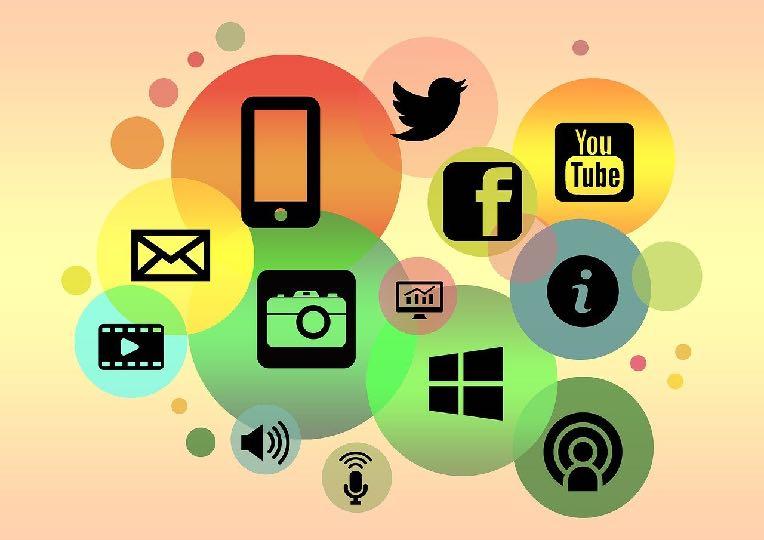














This guide will help you set up parental controls and adjust privacy settings to provide your child with a safer online environment. Parental controls can help to protect your child from seeing something that they shouldn’t — although it is important to emphasise that no system is effective all of the time, so it is important to engage with your child and talk to them about their online life regularly.
The Operating Service that you use on your laptop/computer will include parental controls for free. You will need to create an account to set up the parental controls.
Microsoft

Download the free Microsoft Family Safety app to access features for Windows, Xbox and Android. You will have the ability to:
• Set screen time limits.
• Set age appropriate content filters and block inappropriate content.
• Set up ‘location sharing’ so you can see where your family are.
• View activity reports.
Find out more here: https://www.microsoft.com/en-gb/ microsoft-365/family-safety

To use parental controls, add a user account for your child and then turn on parental controls. Here are just a few of the features available to you :
• Disable the built-in camera.
• Restrict contact with other people through Mail.
• Specify which apps are allowed.
• Ability to limit access to websites.
• Disable or limit access to the iTunes Store.
• Set time limits for weekdays, weekends and bedtime.
• Prevent apps and services from accessing your child’s data.
Find out more here: https://support.apple.com/en-gb/guide/ mac-help/mtusr004/10.14/mac/10.14
Users of this guide do so at their own discretion. No liability is entered into. Current as of the date released 1.7.2024.
Most broadband providers include parental controls for free as part of their broadband package so any device that connects to your WiFI will be protected by any controls you have set up. Remember, children may have devices that use 4G and 5G so they won’t always be connected to your home internet so ensure you set up parental controls on their devices too.

Sky Broadband Shield is included within your Sky Broadband package and helps to protect against phishing and malwareinfected sites. It also includes Safe Search, which is designed to block explicit content when you search online. Your Sky Broadband Shield will automatically be set as suitable for teenagers during the day and adults in the evening. You can change this to suit your family:
1. Choose a rating: You can choose between PG, 13, 18 or customise your protection.
2. Time settings: This feature allows you to set age rating restrictions depending on the time of day. It is set by default to apply the 18 setting from 9pm to 5.30am.
3. Block content: You can block specific websites or categories.
Find out more here: https://www.sky.com/help/articles/skybroadband-shield-start

Virgin Media Essential Security is included within your Virgin Media broadband package as standard. You can customise your settings to block access to websites that are inappropriate for children for example.
Find out more here: https://www.virginmedia.com/broadband/ parental-control
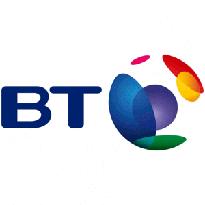
BT include parental controls within their broadband package. Once activated, all devices connected to your BT Home Hub will have content filtered to your set filter level. There are three predefined filter levels (strict, moderate and light) available or you can customise your protection. BT also offer the following functionality:
• Set 'Always allow' specific sites.
• Set 'Always block' sites that you feel are inappropriate such as YouTube.
• Set up homework time.
• Set a time for filters to be on/off.
Find out more here: https://www.bt.com/help/security/how-tokeep-your-family-safe-online-with-bt-parental-controls-an
TalkTalk: https://www.talktalk.co.uk/broadband/security
Plusnet: https://www.plus.net/help/broadband/how-to-useplusnet-safeguard/
Now Broadband: https://help.nowtv.com/article/set-upand-manage-broadband-buddy
Vodafone: https://securenet.vodafone.co.uk/
All consoles offer additional parental controls to limit time spent on the device or limit who your child can communicate with online. Also, be aware of the PEGI ratings on a game, which shows you the age suitability of the game e.g. a PEGI rating of 12 shows the game is only suitable for players over the age of 12, due to its content.

You can download the Xbox Family Settings app to help you manage the following:
• Set screen time.
• Filter content based on your child’s age.
• Approve your child’s purchases.
• Review requests to add a new friend.
Find out more here: https://www.xbox.com/en-GB/family-hub
You can also choose who can communicate with your child through the settings on their console.

The Nintendo Switch Parental Controls smart device app is a free app that can be linked with Nintendo Switch to monitor what your child is playing. The app creates a report so you can see which video games your child plays and how long for. It also allows you to set which games your child can play based on the PEGI age rating and restrict your child from sending/receiving messages from other users.
Find out more here: https://www.nintendo.com/en-gb/ Hardware/Nintendo-Switch-Parental-Controls/NintendoSwitch-Parental-Controls-1183145.html


You will need your own account for the PlayStation Network and an account for each child. Both PS4 and PS5 offer a variety of Parental Control/Family Management options such as:
• Set age rating levels for games and apps.
• Manage how long children can play each day.
• Restrict web browsing.
• Restrict communication.
• Set the monthly maximum amount of money a child can spend in the store.
Find out more here: https://www.playstation.com/en-gb/ parental-controls/

Meta Quest state that “Meta Quest headsets are not toys. Using Meta Quest requires an account and is subject to requirements that include a minimum age of 10.” [https://www.meta.com/gb/ quest/safety-center/]
Parental tools include:
• blocking specific apps.
• set a daily time limit.
• view who your child is interacting with.
• receive purchase notifications.
Find out more here: https://www.meta.com/gb/quest/safetycenter/parental-supervision/

Included in Facebook’s settings are the ability to set who can see your posts, who can contact you and the ability to review all posts before appearing on your timeline.
Unfriend: go to their profile, click on the three dots, click on Following and tap Unfollow.
Blocking: go to their profile, click on the three dots and select Block.
Facebook Privacy Check up: this tool helps you review your settings: https://www.facebook.com/help/ 1297502253597210
You can also set up Family Centre (supervision) on Messenger: https:// en-gb.facebook.com/help/ messenger-app/182587384506653

When you set up your account, it is automatically set as public (except if you are under 18 and it is set to private as default, although you can change it to public).
Remove a follower: Go to your profile and tap Followers and select Remove (on the right). Blocking/Reporting: To do this, tap their username, tap on the 3 dots in the top right and select Block or Report.
Turn off commenting on a post: Tap the 3 dots above your post and select Turn Off Commenting.
Find out more here: https://help.instagram.com/ 196883487377501
You can also set up Family Centre (supervision) to give you access to tools such as see who your child follows and screen time: https:// help.instagram.com/454886756318459? helpref=faq_content

By default, WhatsApp sets your privacy settings to allow any WhatsApp user to see your read receipts, last seen, about and profile photo. To change any of these settings, go to Settings and then select Privacy.
Blocking/Reporting: You can block and report a user by clicking on their name and selecting Block or Report. You can report any issues direct to WhatsApp within the app by going to Settings, Help, Help Center and Contact Support.
Find out more here: https:// faq.whatsapp.com/general/securityand-privacy/staying-safe-on-whatsapp/

You can choose to have a public or private account. If you set your account to private, then only those you accept as friends can see your videos. To do this, go to your profile, tap the 3 line icon, tap Settings and Privacy, go to Privacy and turn on Private account (by default accounts for people under 16 are set to private).
Report inappropriate content: you can report an account, video, comment and message. Follow the instructions here: https://support.tiktok.com/en/safety-hc/ report-a-problem
You can use Family Pairing to link your own TikTok account to your child’s account. This will give you access to additional controls such as:
• Screen Time Management: Control how long your child can spend on TikTok.
• Direct Messages: Limit who can send messages to them or turn off direct messaging completely. Direct messaging is automatically disabled for registered accounts between the ages of 13 and 15.
• Restricted Mode: Restrict the appearance of inappropriate content.
• Discover Search bar - Option to disable.
Find out more here: https://www.tiktok.com/safety/en/guardians-guide/

When you set up your X account, you can choose whether you would like to keep your tweets public or protected (private). To check, go to Settings and Support, select Settings and Privacy, select Privacy and Safety and then Audience and tagging and ensure Protect your posts is selected.
Unfollow somebody: Go to their profile, click on ‘following’ to then select ‘unfollow’. Blocking/Report: Go to their profile, click the three dots and select block or report.
Location: To keep your location private (so followers can’t see the location you are tweeting from), under Settings and Support, select Settings and Privacy, select Privacy and Safety, select Location Information and ensure Precise location is disabled.
Find out more here: https://help.twitter.com/ en/safety-and-security/x-privacy-settings

When you set up your account, it is automatically set so only friends you’ve added can contact you or view your story.
Unfriend: Go to the chat screen, tap and hold on a friend’s name, tap ‘Manage Friendship’ and then tap ‘Remove Friend’. Block a friend: Go to the chat screen, tap and hold on a friend’s name, tap ‘Manage Friendship’ and then tap ‘Block’.
Location settings: This feature allows your friends to see where you are (including when you are at home) when you have the app open. It is so important that you check your child’s settings for this feature. Your location won’t be shared on the map until you open it for the first time, at which point you can choose (please note that snaps you submit to Snap Map can still show up on the Map, no matter what location setting you choose):
• Ghost Mode (Only Me): your location won’t be visible to anyone else.
• My Friends: your location will be shared with all of your friends.
• Select Friends, Except …: your location will be shared with your friends, except the friends on this list.
• Only These Friends …: choose specific friends to share your location with.
Who Can Contact Me: in your privacy settings you can choose who can contact you directly with Snaps, Chats, calls, etc. Remember, if you’re in a group, then anyone can communicate with you in that Group Chat regardless of your settings. Find out more here: https://help.snapchat.com/hc/en-gb/articles/7012343074580-How-do-I-change-my-privacy-settings-on-Snapchat
Family Centre: this can be set up to provide parental control settings such as limit your child's ability to view certain content in the Stories and Spotlight tabs. Find out more here: https://help.snapchat.com/hc/en-gb/articles/7121384944788-What-is-FamilyCentre-
Users of this guide do so at their own discretion. No liability is entered into. Current as of the date
However your child chooses to watch TV, make sure you have set up appropriate parental controls.

Apple TV offers a host of features to restrict usage, such as restricting purchases, restrict opening apps based on age, restrict content identified as explicit and prevent access to Multiplayer Games.
Find out more here: https:// support.apple.com/en-gb/guide/tv/ atvbbaf126df/tvos#4th

You can use PIN protected parental controls to restrict the programmes and channels that can be viewed. Family Setting removes adult channels and requires a PIN to be entered for purchases. You can also apply restrictions based on age certification or restrict access to specific channels.
Find out more here: https://www.sky.com/ help/articles/set-up-parental-controls-onyour-tv

You can set up a PIN code to restrict the programmes and channels that can be viewed as well as hide adult channels and set pin required for purchases.
Find out more here: https:// www.virginmedia.com/help/tv/set-upvirgin-tv-pin

YouTube offer a restricted mode which helps to restrict mature content being shown. Whilst YouTube state that this will never be 100% perfect, it does offer an extra layer of protection. https:// support.google.com/youtube/answer/ 174084
YouTube offer a supervised experience for children under the age of 13. https:// www.youtube.com/intl/en-GB/myfamily/
YouTube Kids (with the option to select the shows you prefer your child to watch) is also available. Find out more here: https://www.youtube.com/kids/saferexperience/

You can add a PIN to your account so a 4digit PIN must be entered to either play any TV show or movie above a selected maturity level (on all profiles) or to play a specific TV series or movie (on all profiles). Alternatively, you can create up to 5 personalised profiles in your Netflix account for each member of the household. You can then choose a maturity level for each profile to control the TV shows and movies they can view.
For younger children, you could create a 'kids experience’ profile, which only includes content appropriate for children.
Find out more here: https:// help.netflix.com/en/node/264

You can add a PIN to your account so a PIN must be entered to purchase or view restricted content. You can restrict viewing of videos from certain ratings categories by selecting which ratings categories you'd like to restrict.
Find out more here: https:// www.amazon.co.uk/gp/help/customer/ display.html?
nodeId=GYBCCNGWAJFEUVG3
Amazon Fire TV devices have their own parental control settings, find out more here: https://www.amazon.co.uk/gp/help/ customer/display.html?
nodeId=202104970

Disney+ offers parental control features such as you can create different profiles and set a content rating for that profile.
Alternatively, you can set up a Kid’s profile which only includes content suitable for all viewers.
Find out more here: https:// help.disneyplus.com/en-GB/article/ disneyplus-en-uk-profiles

You can set up a parental PIN to restrict access to content. You can restrict shows by age rating, so a parental PIN would then be required to watch all shows and movies at that age rating and above.
Find out more here: https:// help.nowtv.com/article/what-is-a-viewingpin

You can set up a Parental Guidance lock (PIN) to control what your children have access to when using the BBC iPlayer. Once it is turned on, to watch anything with a BBC Guidance label, the user will have to enter the PIN. You will have to turn this Parental Guidance Lock on separately on every device you have.
Find out more here: https://www.bbc.co.uk/ iplayer/help/questions/parental-controls
You can also set up a child’s profile (under 13s) so only age appropriate programmes can be viewed.
Find out more here: https://www.bbc.co.uk/ iplayer/help/questions/about-the-childrensexperience/iplayer-child-experience

You can set up a parental controls PIN to restrict access to programmes that display a Guidance symbol.
itvX also offer a kids profile on certain devices, which creates a kid-safe homepage with shows just for kids.
Find out more here: https:// support.itv.com/en_us/does-itvx-offerparental-controls-S1XSOunzs

You can set a PIN to restrict access to content based on age, either 16+ or just for 18-rated content (18+). The PIN must be set up separately on any browsers used and will only restrict programme content, not advertising content.
Find out more here: https:// www.channel4.com/parental-controls

Children under 13 may not use Twitch. Twitch is a live streaming platform.
Settings can be changed to hide unwanted messages by setting Chat Filters and hide content based on content classification labels e.g. gambling. You can find out more here: https://safety.twitch.tv/s/article/ Guide-Parents-Educators?language=en_US
Connect Safely have also produced this guide to Twitch: https://connectsafely.org/ twitch/
An innocent search can result in inappropriate content being seen so we would recommend switching on parental controls. There are a few different search engines out there so find out which search engine your child uses and remember to set them up on all devices your child uses to access the internet, for example their tablet and phone. Not all search engines allow you to ‘lock’ Safesearch on (so users may be able to simply turn it off).

You can use Google SafeSearch to block explicit and inappropriate results such as pornography. As with all filtering systems, SafeSearch isn’t 100% accurate. You will need to log into your Google account to lock any changes you make.
• Go to search settings at https://www.google.com/safesearch.
• Select Filter, Blur, or Off.
• At the bottom of the page, select save.
You can also set up Family Link to help manage search results: https://support.google.com/families/answer/7086922?hl=en
Find out more here: https://support.google.com/websearch/
Yahoo Yahoo offer a SafeSearch lock to protect children from certain types of content. To set this up:

• Sign in with your Yahoo ID.
• Go to Settings and preferences and select appropriate controls.
• Click Save and then sign out to prevent any further changes being made.
Find out more here: https://in.help.yahoo.com/kb/ SLN2247.html
You can set up free parental controls and restrictions on most mobile devices, which can limit what your child can access.
Using Content & Privacy Restrictions in Screen Time, you can block or limit speci
Find out more here:
Apple have also created this support page for families: https:// www.apple.com/uk/families/


When you turn on parental controls, you can restrict what content can be downloaded or purchased from Google Play
Find out more here: https://support.google.com/googleplay/ answer/1075738?hl=en-GB
You can also set up Family Link, which lets you set digital ground rules as well as see where they are, receive notifications when they arrive or leave a certain location and set screen time limits. You will need to download Family Link onto your own device first and then link your child’s account to it.
Find out more here: https://families.google/familylink/
Do you have a voice activated home assistant? Set up appropriate restrictions to limit what your child can do on them.

Whilst there are no specific parental controls, you can apply settings to restrict:
• purchases with a pin only.
• explicit content.
These features can be set up through the Alexa app.
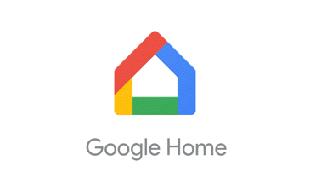
You can set up content filters for your device. Find out more here: https://support.google.com/googlenest/answer/ 7084229?hl=en-GB
Your child under 13 can use Google Assistant on shared devices if you add their Google Account and voice to the device. By setting up a supervised account, children won’t be able to do the following:
• Play YouTube videos or songs from YouTube music (under 13).
• Make purchases.
• Use non-Google apps (unless they have the 'Apps for families on Google Assistant' badge).
Find out more here: https://support.google.com/families/ answer/9071584
There are many organisations set up to provide you or your child with advice should you need it. Here are just some of the organisations that can help you.
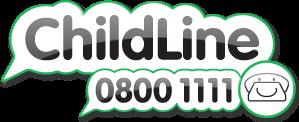

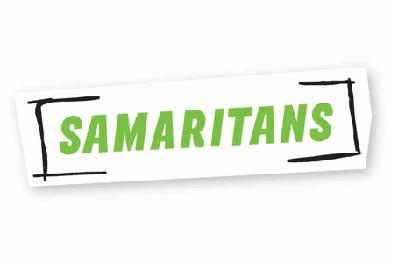


Reporting centre designed to assist everyone in reporting harmful content online.
Find out more here: https:// reportharmfulcontent.com/

You can report sexual images of under 18s online directly to the Internet Watch Foundation.
Find out more here: https:// www.iwf.org.uk/

If you are worried about online sexual abuse or the way someone has been communicating with your child online.
Find out more here: https:// www.ceop.police.uk/safetycentre
• Barnardo’s: https://www.barnardos.org.uk/get-support/ support-for-parents-and-carers/child-abuse-and-harm/ keeping-children-safe-online
• BBC Own it: https://www.bbc.com/ownit
• CEOP: https://www.ceop.police.uk/safety-centre
• CEOP Education: https://www.ceopeducation.co.uk/
• ChildLine: https://www.childline.org.uk/
• Childnet: https://www.childnet.com/
• Internet Matters: https://www.internetmatters.org
• NSPCC Online Safety: https://www.nspcc.org.uk/keepingchildren-safe/online-safety/
• UK Safer Internet Centre: https://www.saferinternet.org.uk/
• Vodafone Digital Parenting: https://www.vodafone.co.uk/ newscentre/smart-living/digital-parenting/ Users of